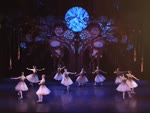DESIGN KIMONO: Koji Yoshie
Full length video
Please read Understanding catalogue records for help interpreting this information and Using footage for more information about accessing this film.
Title: DESIGN KIMONO: Koji Yoshie
Reference number: 13700
Date: 2017
Director: d. Yushin Toda
Production company: japan Desk Scotland
Sound: sound
Original format: unknown
Colour: col
Fiction: non-fiction
Running time: 27.49 mins
Description: japanese traditional craftsman Koji Yoshie explains the basics of kimono design and the history of the garment's development.
Credits:
p. Fumi Nakabachi and Yushin Toda, japan Desk Scotland
comm. w. Yushin Toda
ph. Fumi Nakabachi
ed. Yushin Toda
m. the participants at Taiko Fun Workshops run by japanese Matsuri for Glasgow (Brenda, Bryan, Carolyn, Claire, Fumi, Katie, Kyoka, Laura, Mariko and Susanna)
Shotlist:
Filmmaker's synopsis:
Koji Yoshie is a recognised traditional craftsman of japan. He dyes kimono using Kyo Yuzen’s stencil dyeing technique. He shows stencils to explain basics of stencil dyeing, and uses two of his kimonos to explain basics of kimono design: ‘Furisode’, the ceremonial kimono for an unmarried woman; and ‘Houmongi', the formal visiting kimono for women.
In the ‘Furisode’ arabesque patterns are used, which are originally Mesopotamian, coming to japan centuries ago across India and China. ‘Gofun’, a white powder originally from a shell, is used extensively to highlight colours. In the ‘Houmongi’, he modified both a wave painted by Koetsu (1558-1637), and ivy leaves by Korin OGATA (1658-1716).
The Westernisation of japan from the middle of the 19th century is often blamed for the decline of kimono wearing among people in japan. This may be the case, but Western chemical dyes and refined glues made it possible to make kimono quickly and cheaply.
If you go to Kyoto in summer, you may see many foreign tourists, and some japanese young ones, wearing yukata, cotton kimono for hot and humid summer. Where lies the kimono industry’s future? He and his wife, Junko, recently started a new business of reforming kimono. They were recently invited by japan Desk Scotland to visit Bucharest, Romania, to run a workshop on stencil dyeing for Bucharest University students learning japanese and a seminar on kimono for the general public, which turned out to be popular among the participants.
The interview was carried out in July 2015 in his house in Kyoto, japan.
Interviewees (in order of their first appearances):
Minori, Tomoya, Koji Yoshie and Junko Yoshie






